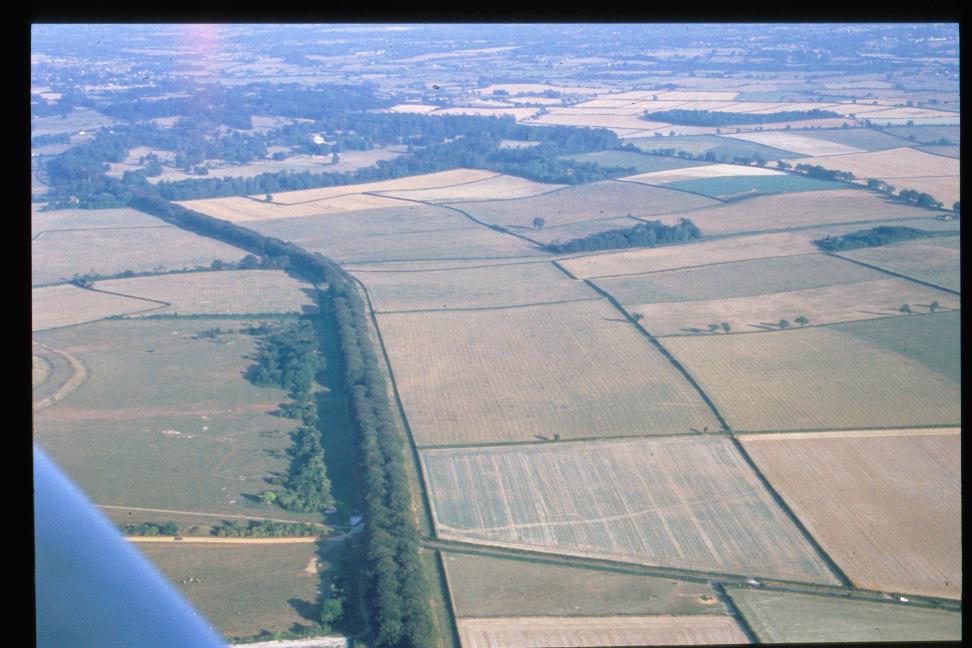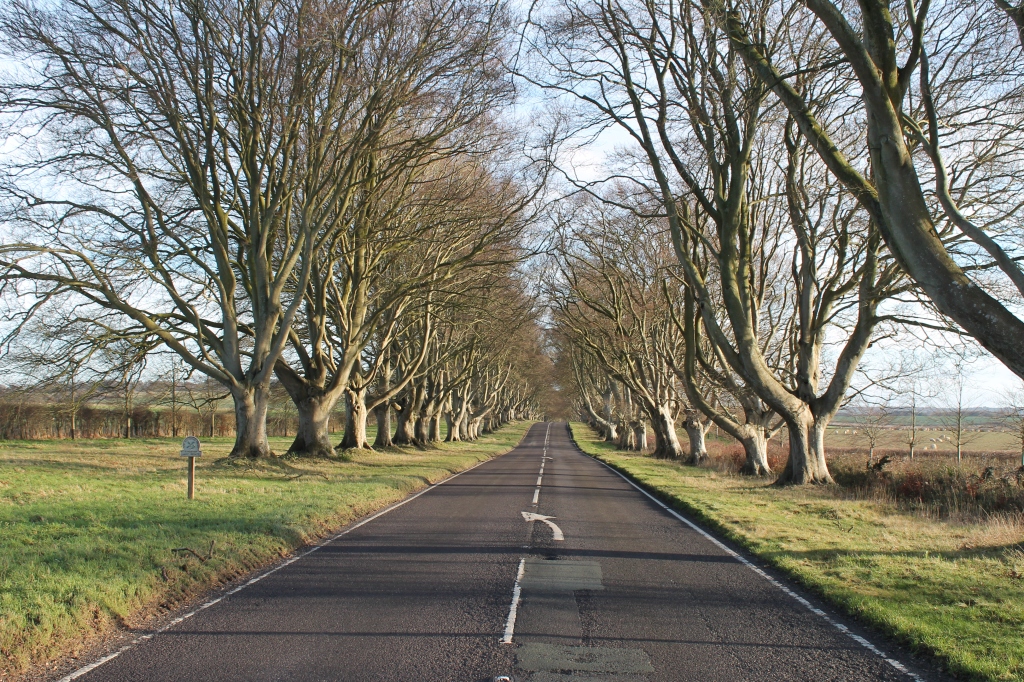I’m not kind to cars.
There was the Vauxhall Nova incident at Golden Cap, the Escort at Thorncombe Beacon and today my Seat Ibiza is bumping across the old stubble of Bishops Court Farm, windscreen-high in vegetation, the wheels bumping along over hidden hazards.
I need to take the tools to the trench-side and Clive and his JCB are cutting into the old ploughsoil, their linear trench now hundreds of metres long.
Two distant people at either end of a white chalky gash in a huge field. Today, just Clive and me with the birdsong, surrounded by the wilding bushy hedges … now off-green and golden.
A herd of deer cross the horizon.
A transformation of four years ago when this 300 hectare arable farm was taken out of the plough. The grain fields productive yet mono-habitat prairies, the hedges close clipped.
The last tenant decided to retire and handed this farm back to the National Trust. Then Covid came and the farmland rested and began to ecologically diversify. All sorts of birds, animals and plants are returning.
Controversial though…. how does nature link arms with commercial farming. This has been a farmed landscape for at least five and a half thousand years. Treading the path to enable productive farming with rich habitats is the golden thread.
There are now plans to create new woodlands with other areas that will become scrub pasture…survey here in the future will not be possible.
Though this land has been ploughed for many generations, archaeology will still survive where features cut into the chalk bedrock. In the right conditions, aerial photography will reveal these hidden features…. and Bishops’ Court certainly has archaeology.
Back in 2014, Wessex Water cut a pipeline across this land and the archaeological recording work revealed all sorts of prehistoric features…including a Bronze Age palisade of close-set tree-sized post-holes backed by a boundary ditch.. elsewhere, by the Dairy, a cemetery of barrow sites.
https://archaeologynationaltrustsw.wordpress.com/2014/04/06/kingston-lacy-the-drone-the-pipeline/
Over the decades, the roots of the trees to be planted in 2023 will seek out nutrient rich archaeological deposits as they grow. What the ploughing avoided, the roots will disrupt.
That’s the theory so…
Find the archaeology and avoid planting there. Make the woodlands where the archaeology isn’t.
At Bishops Court, the National Trust are funding largescale geophysical survey to map the buried remains… and this year, 150 hectares of land have been traversed by Tigergeo Ltd. They have driven their magnetometer buggies across the fields capturing the archaeology.
The prehistoric environment can now be seen and understood on a landscape scale.
This place, was a medieval manor west of Shapwick village…merged with Kingston Lacy.
I walked the farm with Steve and Rebecca the nature and farming advisors.
Its perimeter is higher ground sloping into a gentle dry valley leading south to the meadows beside the River Stour.
A world in itself… the farm now establishing a new identity.
The geophysics shows a complicated network of connected linears on the western upland with settlement enclosures attached. Nearby, are the attendant scattered ring ditches of earlier Bronze Age burial mounds. To the east, along a localised ridge is a row of round barrow sites. Other settlements, boundaries, trackways and field systems cross the area.
It was good to do the survey before the vegetation became too established. Even now, the development of nature makes it a difficult decision to top the ground to enable the next phase of geophysics.
My sense is to grab the survey opportunity before its gone.
The data is so good …it has the appearance of looking into the night sky. So many stars… but what lies beyond them ? Are there significant sites that glimmer only faintly from the geophysical survey plot… or, perhaps they are hidden.. perhaps they do not respond to magnetometry at all? Are we missing anything?
The answer was to put a long trench across a surveyed area which seemed almost blank of features. One of the candidates for woodland planting.
Luke, Harry, Dave and Nancy watched the digger to see…. and the answer was reassuring. The regular deep ploughing of this land had scraped the soil down to chalk, the modern cultivation disturbance 30-40cm deep.
Our 250m long trench found only the long boundary features seen on the geophysics.
At 15m a small ‘U’ shaped ditch with an oyster shell, at 22m a deeper field ditch, a recut of a shallower earlier boundary with an Iron Age sherd in the backfill. At 70m a shallow boundary scooped into the chalk with a later Bronze Age piece of pot.
And beyond this.. at 80m? .. I’d come back to finish things off… early morning, for a couple of hours …to complete the excavation of a pit … nothing was found beyond it….. just hundreds of metres of plough-scored white chalk.
The pit was irregular, mixed with chalk and flint.
Mattocking…with that sense of solitude.. with the hum of the digger in the distance… backfilling the trench.
The wide overcast sky, the threat of the storm to come, my silver thermos, the drawing board, the tape measures ….and the abused Seat Ibiza backed up to the trench.
No finds at all. The feature probably the root bowl from an ancient windblown tree.
Well.. the trees would return here. Our geophysics safeguard was good and the evaluation trench backup was reassuring.
I said a fond farewell to Clive. I guess we won’t meet again.






















